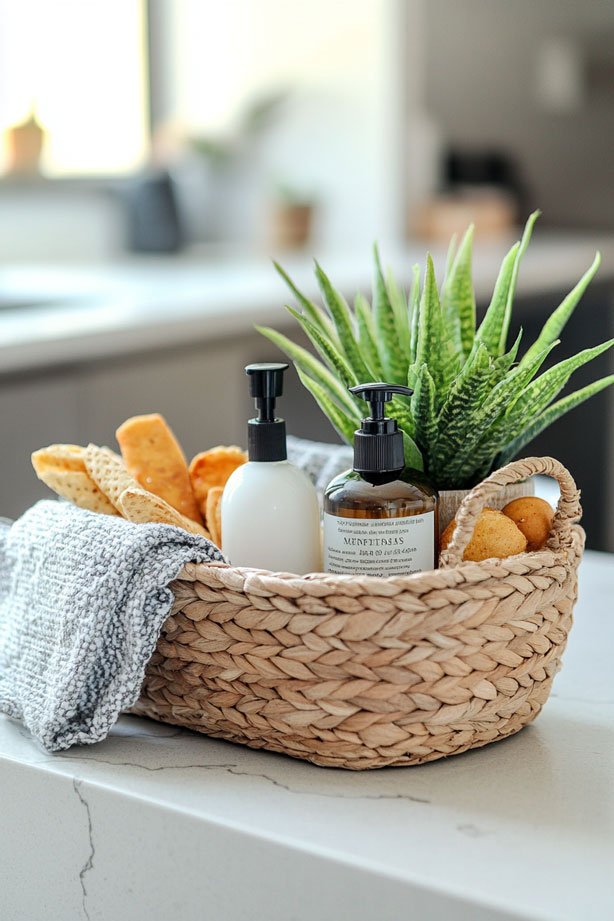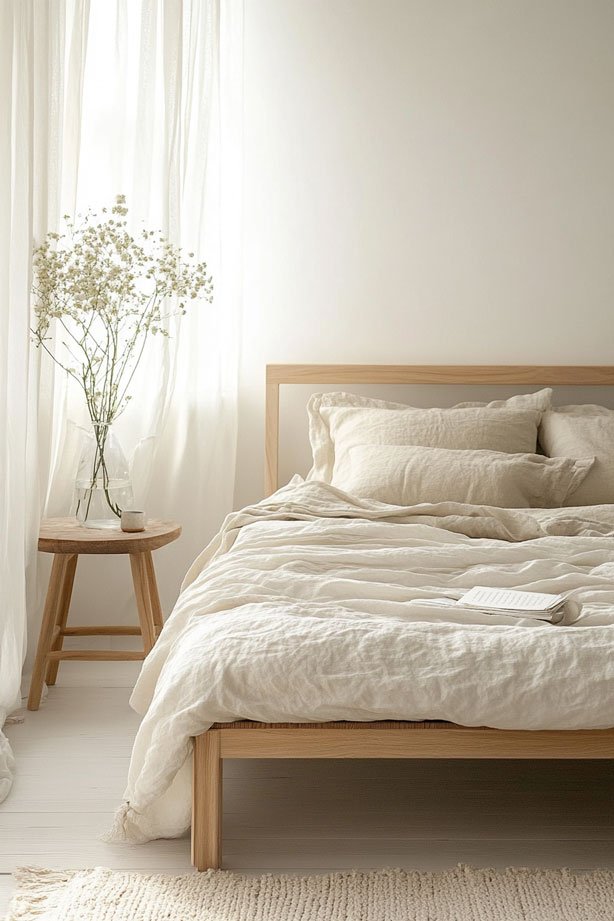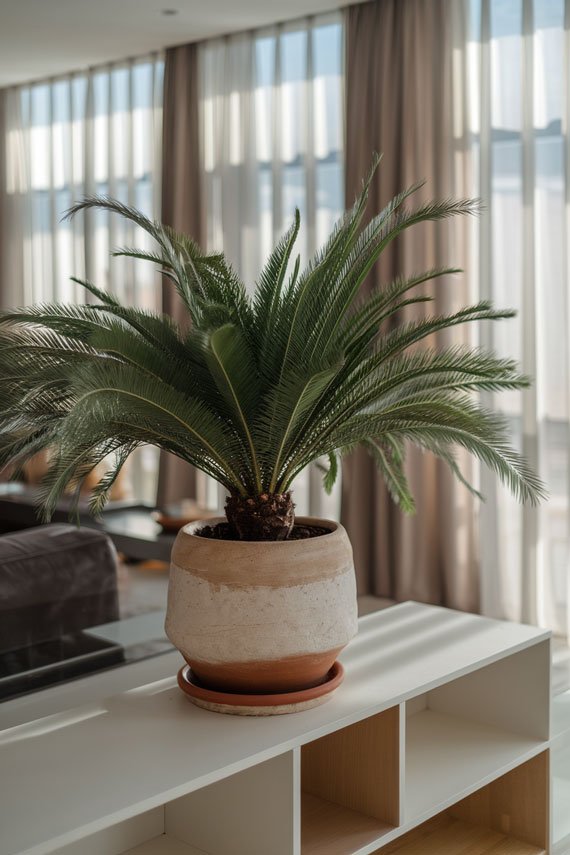Cozy Enclosed Bed Designs for Small Room
Creating a cozy environment in small rooms can often be a challenge, especially when it comes to choosing the right bed. Enclosed beds, such as canopy beds and bed tents, offer unique solutions that not only save space but also enhance comfort and safety. In this article, we will explore the benefits, features, and latest trends of enclosed bed designs suitable for both children and adults.
What Are the Benefits of Enclosed Beds for Small Rooms?
Enclosed beds provide significant benefits for small rooms, particularly in terms of maximizing space while ensuring comfort. These beds create a sense of enclosure, which can enhance feelings of security and privacy. For children, an enclosed bed can serve as a cozy cubby, allowing them to feel safe while sleeping, thus reducing the risk of injuries from falls. Additionally, adults with special needs can find comfort in the protection these beds offer, as they can be designed to accommodate medical requirements.
Safety is another critical benefit of enclosed beds. With features like mesh panels and secure enclosures, these beds keep users safe while they sleep. This is particularly beneficial for children and adults with special needs, such as those with autism or cerebral palsy, who may require additional protection during sleep. The design of an enclosed bed can help prevent falls, ensuring that loved ones sleep soundly without the worry of injury.
Improving sleep quality is a vital aspect of any bed design, and enclosed beds excel in this area. The cozy environment created by a canopy or bed tent can help users relax and fall asleep faster. The added privacy allows for a distraction-free sleeping experience, which is essential for both children and adults. By addressing the need for a quiet and secure space, enclosed beds become an excellent option for enhancing overall restfulness.
How do enclosed beds enhance safety?
Enclosed beds significantly enhance safety by providing a secure sleeping environment. The design typically includes features like side panels, mesh fabric, and sturdy frames that prevent accidental falls during sleep. This is particularly crucial for children, who may shift positions while sleeping, as well as for adults with mobility challenges. Enclosed beds can be equipped with safety features such as a locked door or a secure zipper, ensuring that users are safely contained while they rest. Furthermore, these beds can be tailored to meet the needs of individuals with special needs, ensuring that they have an added layer of protection while sleeping.
Moreover, the use of durable materials in the construction of enclosed beds enhances safety. Metal frames and robust fabrics can withstand daily wear and tear while providing a stable structure for the mattress. Sensory features, like soft foam padding, can also be integrated into the design, minimizing the risk of injury if someone accidentally bumps against the frame. Overall, the safety features of enclosed beds not only protect users but also provide peace of mind to caregivers and loved ones.
In addition to structural safety, enclosed beds can also promote emotional security. For children, having a personal space that feels like a retreat can alleviate anxiety and help them feel more at ease during bedtime. This emotional aspect of safety is vital for promoting a healthy sleep routine. Thus, enclosed beds serve a dual purpose: they safeguard users physically while also creating a nurturing environment conducive to restful sleep.
What options are available for adults and children?
When it comes to options for enclosed beds, there is a wide variety tailored specifically for both adults and children. For children, bed tents and canopies are popular choices, often featuring playful designs that make bedtime fun. These options can easily fit into a small room, enhancing the coziness of the space while providing a safe sleeping area. Additionally, some models come with built-in storage solutions, making them practical for smaller living spaces where every inch counts.
For adults, the selection of enclosed beds ranges from sophisticated canopy beds to more practical options designed for individuals with special needs. Canopy beds often incorporate luxurious materials, creating an elegant look while still providing the safety features required for restful sleep. Some models offer adjustable frames and mattresses, accommodating various sleeping preferences and medical requirements. Enclosed beds for adults can also include features like mesh sides for ventilation, ensuring comfort throughout the night.
Ultimately, the choice of enclosed bed should consider the user’s unique needs. Whether it’s a playful bed tent for a child or a stylish canopy for an adult, there are options available that prioritize safety, comfort, and functionality. As bed designs evolve, manufacturers are increasingly focusing on creating versatile models that cater to both aesthetic preferences and practical requirements.
Can an enclosed bed improve sleep quality?
Enclosed beds can significantly improve sleep quality by providing an environment that minimizes distractions and promotes relaxation. The enclosure creates a dedicated sleep space that helps users feel secure, allowing them to settle in and drift off more easily. For children, this sense of security can reduce nighttime fears, leading to longer and more restful sleep. Adults, too, find that the cozy atmosphere of an enclosed bed can help eliminate sleep disturbances, leading to a more restorative night’s rest.
The design features of enclosed beds also play a crucial role in enhancing sleep quality. Many models incorporate sound-dampening materials that block out external noise, creating a tranquil oasis for slumber. Furthermore, the use of breathable fabrics ensures proper ventilation, preventing overheating during the night. For individuals with special needs, such as sensory sensitivities, these features can be particularly beneficial, as they allow for a controlled sleeping environment.
Incorporating elements like adjustable lighting or calming colors can further enhance the sleep experience in an enclosed bed. By tailoring the sleep environment to individual preferences, users can create a space that not only promotes restfulness but also contributes to overall well-being. Thus, enclosed beds are not just a stylish choice for small rooms; they are also a practical solution for improving sleep quality for both children and adults.
What Features to Look for in a Canopy Bed?
When selecting a canopy bed, several features should be considered to ensure it meets your needs and enhances your bedroom’s coziness. First and foremost, the materials used in the construction of the bed frame are crucial. Opt for durable options like metal or solid wood that provide stability while supporting the mattress. Additionally, the fabric used for the canopy should be lightweight yet sturdy, allowing for easy cleaning while ensuring it can withstand wear over time.
Another essential feature is the design of the bed canopy itself. A well-designed canopy not only adds aesthetic appeal but also provides privacy and protection from the elements. Look for options that include adjustable curtains or coverings, allowing you to customize the level of enclosure based on your preferences. This versatility can be especially beneficial for users who may require a different setup depending on the time of day or specific needs.
Lastly, consider the size of the canopy bed in relation to your room. Ensure that it fits comfortably within the space without overwhelming the area. This is particularly important in small rooms where maximizing space is a priority. A well-chosen canopy bed can transform a small room into a cozy retreat that feels both stylish and functional.
What materials are best for a cozy enclosed bed?
The materials selected for a cozy enclosed bed significantly affect its overall comfort and durability. For the frame, sturdy options like metal or hardwood provide the necessary support for the mattress while ensuring longevity. These materials can withstand daily use and offer stability, which is essential for a good night’s sleep. Additionally, a foam or padded mattress can enhance comfort, making the bed inviting and cozy for users of all ages.
The enclosure itself can benefit from breathable fabrics, such as cotton or linen, which promote airflow and prevent overheating during sleep. These materials are also easy to clean and maintain, ensuring that the bed remains hygienic and fresh. In cases where added protection is necessary, like for children or individuals with special needs, consider integrating mesh panels to provide visibility while maintaining safety.
Moreover, choosing materials that are hypoallergenic can benefit users with sensitivities or allergies. This attention to detail ensures a healthier sleeping environment. Overall, selecting the right materials for an enclosed bed is crucial in creating a cozy and functional space that meets the user’s needs while also enhancing the room’s aesthetic appeal.
How does a bed canopy provide privacy?
A bed canopy offers an excellent way to provide privacy in a sleeping area, especially in shared or small spaces. The design typically includes fabric that drapes over the bed, creating a barrier that visually separates the sleeping space from the rest of the room. This enclosure not only offers a sense of seclusion but also helps to block out distractions, making it easier to relax and fall asleep. For children, this feature can be particularly comforting, as it allows them to create their own personal sanctuary.
Furthermore, a canopy can be designed with adjustable curtains or panels, allowing users to customize their level of privacy based on their preferences. Whether fully closed for complete isolation or partially opened for a more airy feel, the flexibility of a bed canopy enhances its functionality. This adaptability makes it a valuable addition to any small bedroom, where maximizing space while maintaining comfort is key.
Additionally, the aesthetic appeal of a bed canopy contributes to the overall ambiance of a bedroom. With a variety of fabric colors and patterns available, users can select a style that complements their decor while enhancing the feeling of coziness. Thus, a bed canopy not only provides privacy but also elevates the design of the entire space, making it both practical and visually appealing.
Are there portable options for canopy beds?
Yes, there are several portable options available for canopy beds, making them ideal for those who may frequently move or want flexibility in their sleeping arrangements. Portable canopy beds often feature lightweight frames that can be easily assembled and disassembled, allowing for convenient transportation. These models usually incorporate collapsible designs, making them suitable for small rooms, temporary living situations, or camping outings.
Additionally, some portable canopies come with integrated storage solutions, such as built-in bags or compartments to hold the canopy fabric and frame components. This feature ensures that all parts are organized and easy to access when needed. The versatility of portable canopy beds makes them an attractive option for both children and adults who appreciate the coziness of enclosed spaces but require flexibility.
Moreover, portable canopies can be adapted to various settings, such as backyard sleepovers or indoor sleepovers among friends. Their ease of use and adaptability make them a wonderful choice for creating cozy sleeping environments wherever you go. With the right portable canopy bed, users can enjoy the benefits of an enclosed sleeping space without the constraints of traditional furniture.
How to Choose the Right Enclosure for Special Needs?
Choosing the right enclosure for individuals with special needs involves careful consideration of various factors to ensure safety and comfort. First and foremost, assess the specific requirements of the user, such as mobility challenges or sensory sensitivities. Selecting an enclosed bed designed with safety features, like secure sides and easily accessible entry points, is essential for users who may need assistance while getting in and out of bed.
Additionally, consider the type of mattress and bed frame that best accommodates the individual’s medical needs. For example, those with conditions like cerebral palsy may benefit from specialized mattresses that provide additional support and comfort. Customizable frames can also ensure that the bed height is appropriate for the user, making it easier for caregivers to assist without straining.
Moreover, safety features such as padded edges and durable coverings should be prioritized. These elements help prevent injuries while also addressing any sensory needs the user may have. Overall, the right enclosure should not only meet medical requirements but also create a sense of comfort and security for individuals with special needs.
What are the best bed frames for children with special needs?
When selecting bed frames for children with special needs, safety and adaptability are paramount. Options like low-profile frames are ideal, as they minimize the risk of falls and make it easier for children to enter and exit the bed independently. Additionally, frames with secure side panels can provide added protection, reducing the likelihood of injuries during sleep. These features are particularly beneficial for children who may have limited mobility or require additional support while sleeping.
Another important consideration is the material and design of the bed frame. Durable materials like metal or solid wood provide stability and longevity, ensuring that the bed can withstand daily use. Additionally, some frames offer adjustable heights, allowing caregivers to customize the bed to the child’s needs. This adjustability can be especially helpful for children who may require assistance getting in and out of bed.
It’s also crucial to consider the aesthetic appeal of the bed frame. Choosing a frame that aligns with the child’s preferences can enhance their comfort and sense of ownership in their sleeping area. Overall, the best bed frames for children with special needs should prioritize safety, durability, and user comfort, creating a nurturing environment for restful sleep.
How do beds accommodate medical requirements?
Beds designed to accommodate medical requirements often incorporate specialized features that address the unique needs of the user. These beds may include adjustable frames that allow for elevation of the head or legs, providing comfort for individuals with certain medical conditions. Such adjustments can enhance circulation and alleviate discomfort, making it easier for users to find a comfortable sleeping position. Additionally, these beds often come equipped with pressure-relieving mattresses that help prevent pressure sores, which is critical for those with limited mobility.
Moreover, many medical beds are designed with safety in mind. Features such as guardrails and low heights prevent falls and ensure that users are securely positioned while sleeping. For children or individuals with special needs, these safety elements are crucial for providing peace of mind to caregivers and loved ones. Some models even include built-in monitoring systems that alert caregivers if the user requires assistance during the night.
Furthermore, customization options are also available for beds that accommodate medical requirements. For example, the ability to select various mattress types, such as foam or gel, allows users to find the best comfort level for their specific needs. Overall, beds that accommodate medical requirements are designed to enhance comfort, safety, and accessibility, ensuring restful sleep for all users.
How to Assemble a Cozy Bed Tent in a Small Room?
Assembling a cozy bed tent in a small room can be a straightforward process with the right tools and planning. First, gather the necessary tools, which typically include a screwdriver, a hammer, and any assembly instructions provided by the manufacturer. Before you begin, ensure that you have enough space cleared around the bed area to facilitate easy movement during the assembly process. Having a clean and organized workspace can significantly simplify the setup.
Next, follow the assembly instructions step by step, paying careful attention to details such as securing all screws and fittings properly. This ensures the bed tent’s stability, which is crucial for safety, especially for children. Once the frame is assembled, draping the fabric around the structure should be done carefully to achieve a snug fit without creating any gaps. Ensuring that the fabric is securely attached prevents it from being dislodged during use.
Lastly, once the bed tent is fully assembled, take some time to personalize the interior space. Adding soft bedding, decorative pillows, or even string lights can create a cozy and inviting atmosphere for the user. Personal touches can enhance the overall experience, making bedtime more enjoyable. With a little time and effort, a bed tent can transform a small room into a cozy retreat.
What tools are necessary for assembly?
Assembling a cozy bed tent requires a few essential tools that facilitate a smooth and efficient process. The primary tool needed is a screwdriver, as it helps secure various components of the bed tent together. Depending on the design, you may also need a hammer to gently tap in any nails or pins that help create a stable structure. Additionally, having a level can ensure that the frame is even, preventing any wobbling or instability once the tent is set up.
Other helpful tools might include an adjustable wrench for tightening bolts and a measuring tape to ensure that the bed tent fits perfectly in the designated space. It’s also wise to have a soft cloth or rag on hand for cleaning any dust or debris from the frame before assembly. By gathering these tools ahead of time, you can streamline the assembly process and ensure that everything is set up correctly.
Moreover, having a friend or family member assist you during the assembly can make the process more manageable. This extra set of hands can help hold pieces in place while you secure them, reducing frustration and speeding up the installation. Overall, being well-prepared with the right tools and assistance can make assembling a cozy bed tent in a small room a pleasant experience.
Are there tips for maximizing space with a bed tent?
Maximizing space with a bed tent in a small room involves strategic planning and clever design choices. One effective tip is to select a bed tent that can fit snugly over a lofted bed or bunk bed. This configuration allows for additional space underneath the bed for storage or a play area, effectively utilizing vertical room space. Additionally, using multi-functional furniture, such as storage benches or ottomans, can further enhance the room’s functionality while maintaining a cozy feel.
Another useful strategy is to incorporate wall-mounted shelves or storage units around the bed tent. These options provide extra storage without taking up valuable floor space. By keeping personal items organized and off the floor, the room can feel more spacious and less cluttered. Utilizing hooks or hanging organizers on the walls can also contribute to space-saving efforts while keeping essentials easily accessible.
Finally, consider the color scheme and lighting of the room. Lighter colors can create an illusion of more space, while well-placed lighting can brighten the area, making it feel airy and inviting. Incorporating mirrors can also help reflect light and create a sense of depth, further enhancing the feeling of a larger space. By combining these tips, you can create a cozy bed tent area that maximizes space in a small room effectively.
What is the best way to wash and maintain bed coverings?
Washing and maintaining bed coverings is essential for keeping the bed tent clean and cozy. Start by checking the care labels on the fabric to determine the best washing method. Most fabric coverings can be machine washed on a gentle cycle with cold water to prevent shrinkage or damage. It’s important to use a mild detergent that won’t irritate sensitive skin, especially for children or individuals with special needs.
Before washing, remove any detachable parts, such as pillows or liners, and wash them separately if necessary. Additionally, spot cleaning any stains with a damp cloth and mild soap can help maintain the coverings between washes. Regularly vacuuming the bed tent can also prevent dust buildup, ensuring a clean sleeping environment. Once washed, air drying is preferred to maintain the fabric’s integrity and prevent shrinkage.
In terms of maintenance, inspecting the bed tent for wear and tear is crucial. Regular


















